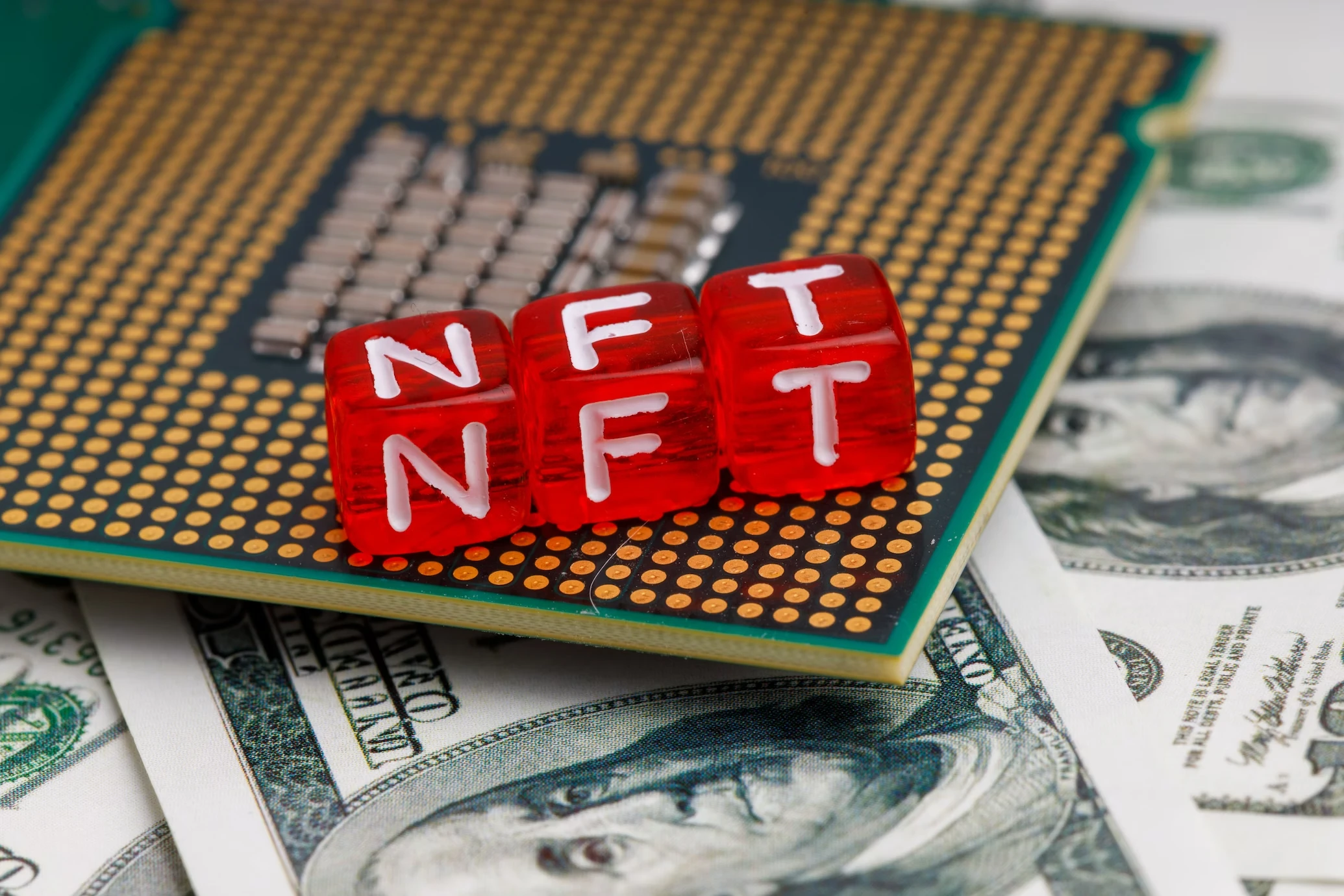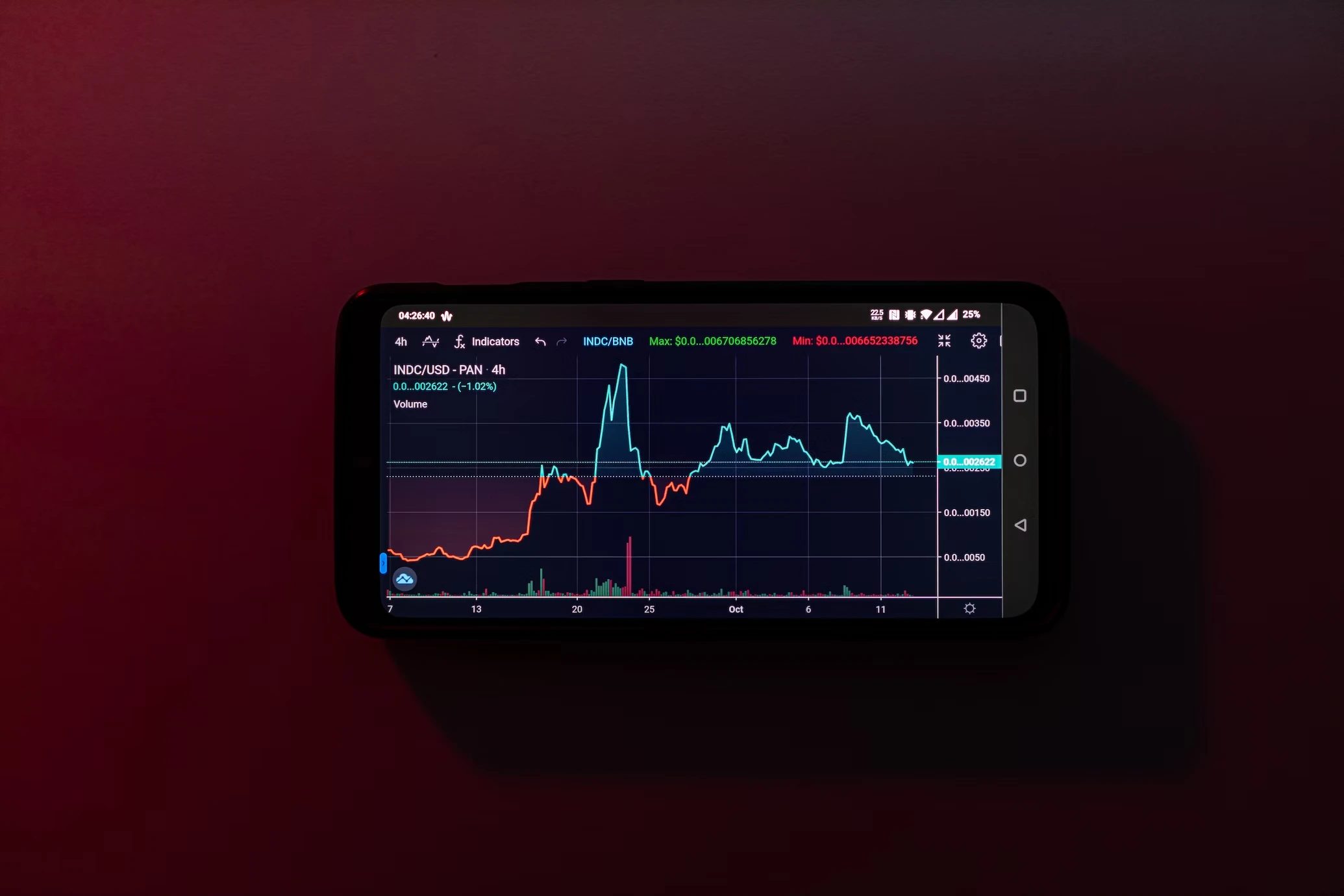
This website uses cookies
We use Cookies to ensure better performance, recognize your repeat visits and preferences, as well as to measure the effectiveness of campaigns and analyze traffic. For these reasons, we may share your site usage data with our analytics partners. Please, view our Cookie Policy to learn more about Cookies. By clicking «Allow all cookies», you consent to the use of ALL Cookies unless you disable them at any time.
In recent years, the world has witnessed significant growth and development in the realm of digital assets. From cryptocurrencies to digital art, the evolution of these assets has opened new horizons in the digital economy. One of the most striking and influential innovations in this area has been the emergence of Non-Fungible Tokens, or NFTs.
NFTs represent unique digital assets that use blockchain technology to confirm their uniqueness and authenticity. Unlike traditional digital assets that can be copied and reproduced, each NFT is one-of-a-kind, possessing unique value and cannot be exchanged for something else.
What are NFTs?
Definition and Unique Properties
Non-Fungible Tokens (NFTs) are unique digital assets that represent more than just digital ownership. Each NFT is distinctive, non-interchangeable, and verified by blockchain technology, guaranteeing its authenticity and originality. The uniqueness of NFTs lies in the fact that they do not have an equivalent or standard market value, unlike "fungible" assets like bitcoins or dollars, which are interchangeable and have a fixed value.
Key Characteristics of NFTs
Uniqueness:
Each NFT contains specific information that makes it different from any other NFT and verifies its uniqueness.
Proof of Ownership:
NFTs serve as a digital certificate of authenticity and ownership rights, which is particularly important in the fields of art and collecting.
Non-interchangeability:
Unlike traditional digital assets or currencies, NFTs cannot be exchanged for another asset "of equal value" as each is unique.
Differences Between NFTs and Traditional Digital Assets
Replaceability:
Traditional digital assets are generally interchangeable. For example, one bitcoin is always equal to another bitcoin in value and properties, whereas each NFT is unique.
Standardization of Value:
Traditional digital assets have a standardized market value, while the value of NFTs is determined by a multitude of factors, including rarity, origin, and emotional value.
Functionality:
NFTs can include additional functionality, such as software or contracts, which expands their capabilities compared to traditional digital assets.
NFTs redefine the concept of digital ownership, offering new possibilities for creators, collectors, and investors. They differ from traditional digital assets in their uniqueness, non-interchangeability, and the ability to provide proof of digital ownership.
Historical Context and Development of NFTs
The Beginning of the NFT Era
The history of NFTs began long before their widespread recognition and popularity. These unique digital assets emerged in the world of cryptocurrencies and blockchain, representing an innovative approach to digital ownership and copyright.
Early Experiments:
Some of the earliest examples of NFTs were projects like "Colored Coins" on the Bitcoin blockchain, which allowed attaching special attributes to small amounts of bitcoins, representing various assets.
CryptoPunks and CryptoKitties:
In 2017, projects like CryptoPunks and CryptoKitties became pioneers in using NFTs for digital art and collectibles. CryptoKitties, in particular, gained widespread attention and became one of the first viral blockchain projects on Ethereum.
Expansion and Growth of the NFT Market
Explosive Growth:
Since 2020, the NFT market began to accelerate, attracting not only cryptocurrency enthusiasts but also the general public. This was partly driven by growing interest in digital art and unique digital goods.
Impact on Art and Entertainment:
NFTs became a significant phenomenon in the art world, allowing artists and creators to sell their works directly through blockchain platforms. This led to new forms of art and ways of interacting with audiences.
Examples of Notable Sales:
Some of the early and significant NFT sales include works by artists like Beeple and token packs from famous artists and brands. These sales attracted media attention and showcased the potential of the NFT market.
The history of NFTs is a narrative of gradual development and a sudden surge in popularity that turned digital ownership concepts on their head and created new markets for artists, musicians, and other creators. This development continues to impact the digital economy and presents an interesting example of how technology can contribute to the evolution of art and culture.
Technological Foundations of NFTs
Blockchain as the Basis of NFTs
Blockchain technology forms the foundation of Non-Fungible Tokens (NFTs), providing them with their unique characteristics and capabilities. Known for its application in cryptocurrencies like Bitcoin and Ethereum, blockchain is a distributed database where data is stored in blocks and linked using cryptography.
Blockchain Features for NFTs
Non-interchangeability:
Unlike cryptocurrencies, which are interchangeable, each NFT is unique. Blockchain enables recording and verifying this uniqueness, ensuring that each NFT cannot be duplicated or counterfeited.
Uniqueness and Authenticity:
Blockchain provides transparency in the origin of each NFT, allowing the tracking of its creation and ownership history. This guarantees the authenticity of each token and its exclusivity.
Decentralization:
Thanks to the decentralized nature of blockchain, NFTs can exist independently of any centralized organization or platform, enhancing their value and reliability.
Smart Contracts:
NFTs often utilize smart contracts on the blockchain for automating certain actions, such as fulfilling sale conditions or transferring rights. This adds an additional level of functionality and security.
Utilizing Blockchain to Verify Uniqueness
Blockchain not only stores information about each NFT but also provides mechanisms to verify its uniqueness and history. This is achieved through a transparent and immutable record on the blockchain, allowing users and collectors to confidently invest in these digital assets, knowing that their purchase is authentic and one-of-a-kind.
Blockchain technology provides the necessary infrastructure for creating, managing, and trading NFTs. It ensures trust and security in the world of digital assets, making NFTs more than just digital objects – they are full-fledged assets with verified value and history.
Application of NFTs in Various Fields
Expanding Boundaries Through NFTs
Non-Fungible Tokens (NFTs) have found applications in numerous fields, significantly expanding the boundaries of traditional approaches to creativity, ownership, and commercialization. From art to music and gaming, NFTs bring novelty and opportunities to various areas.
Art
Digital Art:
Artists are using NFTs to create and sell unique digital artworks. This has allowed many artists to gain recognition and financial benefits, while also ensuring copyright and authenticity of their works.
Transforming the Art Market:
NFTs have transformed the art market, providing a new platform for collectors and investors and bringing clarity to the provenance and ownership of artworks.
Music
Digital Releases and Albums:
Musicians and producers have started releasing their tracks and albums as NFTs, securing copyright and offering fans unique ownership opportunities.
New Monetization Avenues:
NFTs have opened new ways for musicians to monetize their creativity, allowing them to interact directly with their audience and bypass traditional distribution channels.
Gaming
Integration in Video Games:
In the gaming industry, NFTs are used to create unique in-game items and characters that players can buy, sell, or trade.
Development of Gaming Ecosystems:
NFTs contribute to the development of gaming ecosystems, where players have real economic benefits and participation in the game's economy.
 The Key to Blockchain: Exploring Python's Capabilities for Blockchain Development and Interaction
Read
The Key to Blockchain: Exploring Python's Capabilities for Blockchain Development and Interaction
Read
Analysis of NFT Impact
NFTs have brought new perspectives to many fields, changing traditional models of ownership and commercialization. They provide creators with greater control over their works and monetization opportunities, while for consumers, they offer a new experience of ownership and interaction with digital assets. The influence of NFTs continues to grow, creating new markets and opportunities for innovation in various areas.
Economic and Social Impact of NFTs
Impact on the Digital Market and Economy
Non-Fungible Tokens (NFTs) have significantly influenced the digital economy, changing conventional approaches to digital ownership, trading, and investing.
Expansion of the Digital Market:
NFTs have created a new segment in the digital market, allowing artists, musicians, and other creators to monetize their works in unique ways. This has attracted new investors and collectors interested in unique digital assets.
Impact on Traditional Industries:
The introduction of NFTs into traditional sectors, such as art and entertainment, has led to a rethinking of standards of copyright and ownership, as well as new revenue models for creators.
Social and Legal Aspects
Democratization of Creativity:
NFTs have provided an opportunity for a wide range of artists and creators to enter the global arena, offering new paths for promoting their creativity.
Legal Issues:
The emergence of NFTs has raised several legal issues, including copyright, transfer of ownership rights, and authenticity validation. These issues require attention and the development of new legal frameworks.
Impact on Collective Perception of Value:
NFTs have changed perceptions of value and rarity in the digital world, sparking debates about what gives value to digital assets.
Ethical and Environmental Concerns:
There are concerns about the energy consumption of blockchain networks used for NFTs and their impact on the environment, raising questions about the sustainability and ethics of using these technologies.
NFTs have had a profound impact on both the economy and social structures, changing approaches to digital ownership and creating new markets and opportunities. However, this influence is accompanied by challenges related to legal, ethical, and environmental aspects, requiring further study and regulation.
Criticism and Challenges Associated with NFTs
A Critical Look at NFTs
While NFTs have brought innovations and new opportunities to the digital economy, they have also faced serious criticism and challenges that raise questions about their long-term impact and sustainability.
Copyright Issues
Rights to Digital Works:
One of the key issues is the determination and protection of copyright in the context of NFTs. Typically, purchasing an NFT does not grant the buyer copyright of the digital work, which can lead to confusion and disputes.
Replication and Copying:
The problem of copying and replicating digital works that can be sold as NFTs without the original creators' permission exists.
Environmental Concerns
Blockchain Energy Consumption:
Blockchain platforms used for creating and trading NFTs, especially Ethereum, consume a significant amount of energy, raising concerns about their environmental impact.
Carbon Footprint:
The high carbon footprint of transactions related to NFTs has been criticized from a sustainability and environmental responsibility perspective.
Current and Potential Challenges
Regulation and Legal Framework:
The lack of clear regulation and legal frameworks creates uncertainty in the NFT market, which could lead to legal disputes and fraud.
Speculative Bubble:
There is a concern that the current interest in NFTs is a speculative bubble, which could lead to market instability and loss of investor confidence.
Accessibility and Inclusivity:
Issues of accessibility and inclusivity are also on the agenda, as the creation and purchase of NFTs can be inaccessible to a wide range of creators and collectors due to high costs and technological barriers.
NFTs represent a dynamically evolving area with great potential but also a number of serious challenges and problems. These issues require careful consideration and addressing by the community, regulators, and market participants to ensure sustainable and responsible development of the NFT industry.
The Future of NFTs and Digital Markets
Looking Ahead at NFTs
Non-Fungible Tokens (NFTs) continue to be at the forefront of innovation in the digital economy, and their future appears full of opportunities, but also certain uncertainties.
Predictions and Potential Trends
Integration and Broadening of Applications:
NFTs are expected to integrate into wider areas, including digital identifiers, copyrights, and even physical assets, expanding their application beyond art and collectibles.
Technological Advancements:
The development of technologies, especially in blockchain, promises to make NFTs more accessible, efficient, and environmentally sustainable.
Regulation of Legal Issues:
More legal and regulatory frameworks are likely to be developed to regulate the NFT market, particularly concerning copyrights, ownership, and validation.
Long-Term Impact on Digital Markets
Redefining Value and Ownership:
NFTs could radically change perceptions of value and ownership in the digital space, offering new forms of interaction between creators and consumers.
Market Growth and Volatility:
The NFT market is likely to continue growing, but its volatility will remain a challenge for investors and users.
Social and Cultural Impact:
NFTs could significantly influence social and cultural aspects, changing the ways we interact with art, media, and other forms of digital content.
NFTs stand on the brink of several potential transformations in the digital economy. They offer opportunities for innovation and the creation of new markets but also require careful consideration regarding their sustainable and responsible use. The future of NFTs and digital markets will depend on their ability to adapt and integrate into changing economic and social structures.
Conclusion
NFT as a Catalyst in the Digital Asset Revolution
Non-Fungible Tokens (NFTs) have been at the forefront of significant changes in the world of digital assets, representing not just a new technology but a new philosophy of ownership and interaction in the digital space.
Rethinking Digital Ownership
A New Perspective on Value and Ownership:
NFTs are changing traditional perceptions of digital ownership and value, offering a unique way to authenticate authorship and ownership of digital objects.
Democratizing Creativity and Commerce:
They provide creators with direct access to the market, bypassing traditional intermediaries, thereby democratizing the process of creation and sale.
Impact on Trade and Economy
Creating New Markets:
NFTs contribute to the creation of new markets and economic models, particularly in the fields of art, music, and digital content.
Transforming Traditional Industries:
The influence of NFTs extends to traditional industries as well, prompting a need to rethink approaches to copyright, marketing, and customer engagement.
Future and Potential
NFTs represent more than just a passing trend; they are a symbol of broader changes in the digital economy. Their potential in changing the understanding of digital ownership and trade is yet to be fully realized, and they could lead to new innovations and ways of interaction in the digital world.
Final Thoughts
While NFTs continue to provoke debate and divide opinions, their contribution to the digital asset revolution is undeniable. They have already changed the landscape of the digital economy and will continue to influence how we perceive and interact with the digital world in the future.





